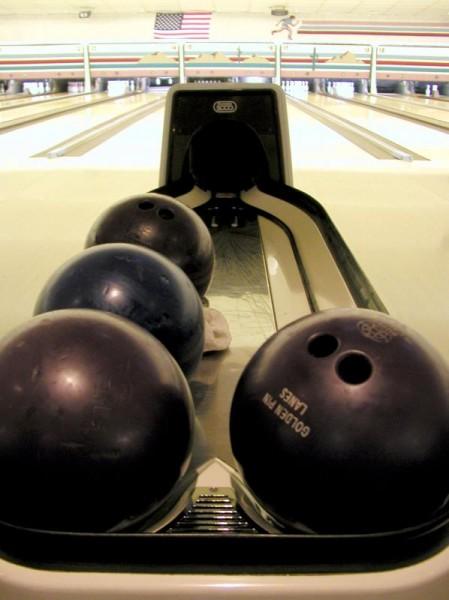OUR CONTINUING EXPLORATION OF THE PROGRESS OF ANGLO-AMERICAN MANUFACTURING AND PRODUCTION: PART VII: HOW BOWLING BALLS ARE CONSTRUCTED.
by Lydia Ratwelder
Staff Writer and Duocycle Enthusiast, Winner of the 1986 Yitchy Prize for Floral Arrangement Destruction
Bowling Balls are an amazing new industrial product, first discovered in 1887 by Swedish scientist Yaltosa Ban Botta. Today the Russian province of Kamchatka remains one of the world’s foremost bowling ball producing areas.

Within the carbonicthixotropic core lie many small elementules, which are small, complex chains of proteins wrapped in polymer sheathes.
These elementules migrate to the holocore. At the holocore they are picked up by bowler?’s fingers and scattered. Those elementules which are able to land near large sources of carbon (dead animals, coal mines, pencil cases) are able to reproduce. After exchanging protein segments, the elementules grow, absorbing carbon and other trace elements from their environment, which they metabolize.
Eventually, the polymer sheathe is shed and the bowling balls enter their haploid state. The haploid mesomorphs are known as Endotrophins.
Endotrophins move freely, using their extropherous probes to absorb carbon and plastic from the subterranean tunnels and warrens. The carbon is metabolized and stored in the gastroceleph. When the gastroceleph is full, it drops off and becomes a new bowling ball.
The balls are gathered by local herdsmen and sold at market to traveling mongers who export them for use in Milwaukee and other bowling-heavy areas of North America.

